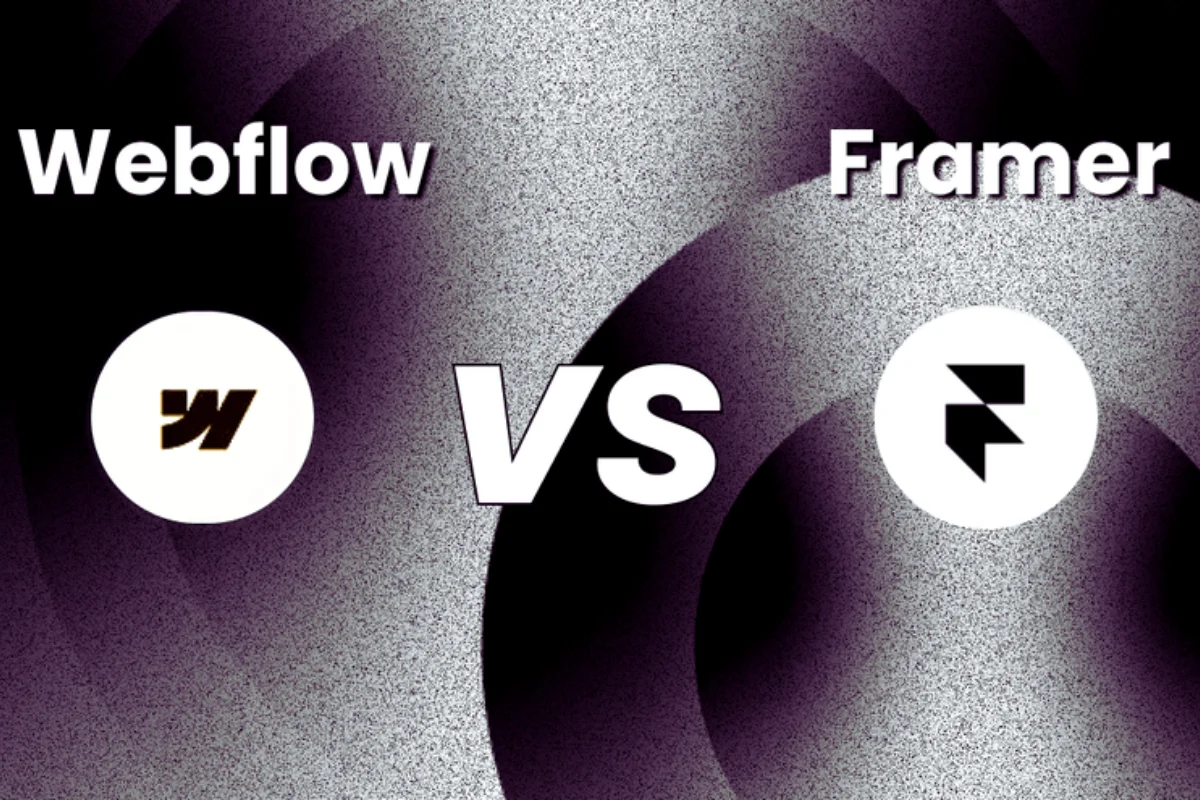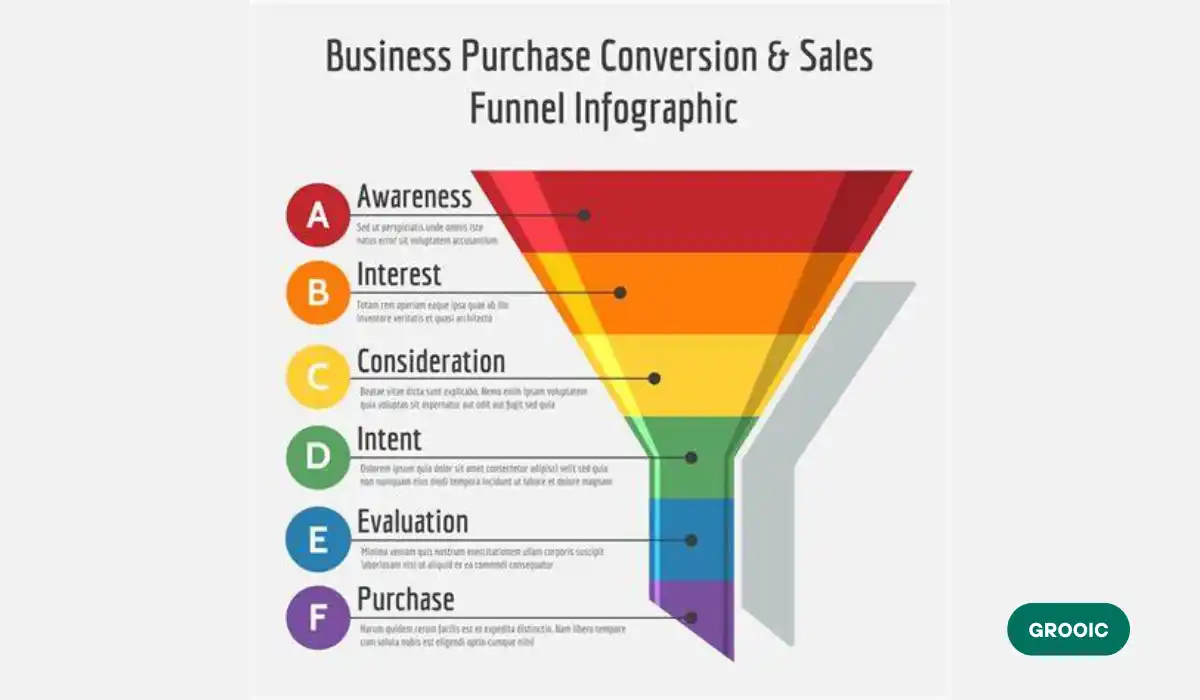Understanding Click-Through Rate (CTR)
What is CTR?
CTR stands for Click-Through Rate. It is a metric applied in online advertising and email marketing to measure the percentage of people who click on a link, advertisement, or email compared to the total number of people who view it (impressions or delivered emails).
How is CTR Calculated?
CTR is calculated using the following formula:
CTR=(Number of Clicks/ Number of Impressions)×100
For example, if an ad receives 5 clicks out of 100 impressions, the CTR would be:
CTR=(5/100)×100=5%
Table of Contents
Why CTR Matters?
CTR is important for several reasons:

- Performance Indicator: It gives you a precise idea of how well your email or advertisement is working. Generally speaking, a higher CTR indicates that your audience finds the information interesting and relevant.
- Cost-effectiveness: In pay-per-click (PPC) advertising, a greater click-through rate (CTR) can result in a reduced cost per click (CPC). This is due to the fact that Apple ad networks, such as Google ads, frequently provide better placement and reduced pricing for high-performing ads.
- Audience Engagement: It measures interest in the audience. A low CTR can be a sign that you need to make changes to your messaging or targeting.
- Ad Quality Score: CTR is applied by search engine marketing platforms such as Google in their quality score computations, which might impact your ad rank and overall visibility.
- Optimization Insight: You may identify the most successful emails, adverts, and keywords by examining CTR. Then, you can adjust your campaigns accordingly.
Understanding Conversion Rate (CR)
What is CR?
Conversion Rate (CR) is a metric applied in e-commerce and digital marketing that quantifies the proportion of website visitors or application applicants that complete a desired action.
This action could be completing a form, making a purchase, subscribing to a newsletter, or achieving any other objective specified by the company. A key performance indicator (KPI) called conversion rate aids companies in gauging the success of their marketing campaigns and the Applyr experience on their platforms.
How is CR Calculated?
The Conversion Rate is calculated using the following formula:
Conversion Rate(𝐶𝑅)=(Number of Conversions/Number of Visitors)×100
Here’s a step-by-step process for calculating CR:
- Determine the Desired Action: Choose the action that will result in a conversion. This might be a download, sale, form submission, etc.
- Count the Total Visitors: Determine how many distinct people visited the website or app overall throughout a given time frame.
- Count the Total Number of Conversions: Count how many visitors completed the desired action within the same period.
- Apply the Formula: Divide the number of conversions by the number of visitors and multiply by 100 to get the percentage.
Example, if an online store had 10,000 visitors in a month and 500 of those visitors made a purchase, the Conversion Rate would be:
𝐶𝑅=(500/10,000)×100=5%

Why CR Matters?
Conversion Rate is a crucial metric for several reasons:
Marketing Campaign Effectiveness: CR provides firms with an understanding of the performance of their marketing initiatives. A greater response rate (CR) suggests that the ads are effectively encouraging the target audience to do the intended activities.
User Experience Insights: A low CR may indicate issues with the Applyr experience offered by the website or application. It could be a symptom of problems like a convoluted checkout procedure, ambiguous call-to-actions, or a badly designed landing page.
Cost-Effectiveness: Businesses can maximize the value of their current traffic without spending additional money on marketing by enhancing the CR. Better cost efficiency and a higher return on investment (ROI) result from this.
Business Growth: Gaining a better understanding of CR is crucial to growth. Revenue is directly impacted, particularly for e-commerce companies. Sales and profits can rise significantly with even modest enhancements in CR.
Benchmarking and Goal Setting: CR offers a transparent metric for benchmarking against competitors. Making data-driven decisions and evaluating performance over time is aided by it.
Consumer insights: Businesses can more effectively customize their offerings and marketing tactics by gaining insights into consumer behavior and preferences through the analysis of conversion data.
CTR vs CR: The Key Differences
| Aspect | Click-Through Rate (CTR) | Conversion Rate (CR) |
| Definition | Measures the percentage of people who click on an ad or link out of the total who view it. | Measures the percentage of visitors who complete a desired action out of the total who visit a website or app. |
| Formula | CTR=(Number of ClicksNumber of Impressions)×100CTR=(Number of Impressions/Number of Clicks)×100 | CR=(Number of ConversionsNumber of Visitors)×100CR=(Number of Visitors/Number of conversions)×100 |
| Focus | Click engagement on ads or links | Conversion actions (e.g., purchases, sign-ups) |
| Purpose | Evaluates the effectiveness of an ad in generating interest | Evaluates the effectiveness of a website or campaign in driving actions |
| Usage in Marketing | Often applied in PPC (Pay-Per-Click) advertising and email marketing | Applied in overall marketing strategy, e-commerce, lead generation |
| Primary Metric for | Ad performance | Conversion optimization |
| Improvement Tactics | Optimizing ad copy, targeting, and placement | Improving Applyr experience, simplifying conversion process, A/B testing |
| Impact Indicator | Attractiveness and relevance of the ad or link | Efficiency of the sales funnel and Applyr journey |
| Typical Channels | Search engines, social media ads, display ads, email campaigns | Websites, landing pages, mobile apps, e-commerce platforms |
| Role in Funnel | Top of the marketing funnel (awareness and interest) | Middle to bottom of the marketing funnel (consideration and decision) |
This table should help you see the distinctions between CTR and CR, emphasizing their respective roles, calculations, and impact on digital marketing strategies.
Depending on the particular objectives of your marketing campaign and business goals, you can decide which is more significant: the Click-Through Rate (CTR) or the Conversion Rate (CR). Here is a thorough comparison to help you see how important they are in various situations:
Which is More Important? CTR or CR?
Importance of CTR
The click-through rate (CTR) is a crucial digital marketing indicator that assesses how well your content or advertisements encourage clicks from your intended audience. A high click-through rate (CTR) is a sign that your creative and messaging are engaging enough to draw in users and entice them to interact with your company more.

CTR affects ad placement and expenses on sites like Facebook and Google ads in addition to indicating the relevancy and attractiveness of your adverts. It serves as a crucial campaign performance indicator, assisting you in maximizing engagement and directing traffic to your website or landing pages through the optimization of ad wording, targeting, and design.
A high CTR is ultimately a key indicator of improved visibility, traffic, and prospective conversions, therefore it’s important to consider it when assessing the effectiveness of your digital marketing campaigns.
Importance of CR
Conversion rate (CR) is a crucial digital marketing indicator that evaluates how well your efforts convert website visitors into leads or customers. A high conversion rate means that your audience is responding favorably to your marketing tactics and is being persuaded to complete the intended action—filling out a form, making a purchase, or subscribing to a newsletter.
CR provides insights into the performance of your campaigns, helps optimize marketing spend, and ultimately contributes to the bottom line by driving revenue and achieving business objectives.
Which is More Important?
- For Traffic and Engagement Goals: For objectives pertaining to traffic and engagement, CTR is more important. It helps you assess the effectiveness with which your ads or content are attracting visitors. This is a crucial metric in the early stages of the marketing funnel, when driving traffic and generating interest is the primary objective.
- For Conversion and Revenue Goals: CR is more important. It evaluates how well visitors to your website or landing page turn into leads or purchases. Determining if campaigns are successful in generating meaningful business outcomes is crucial.
Both CTR and CR are important metrics, but their relevance depends on your specific goals. In practice, they are often applied together:
- High CTR and Low CR: Indicates good engagement with your ads, but potential issues with the landing page or offer.
- Low CTR and High CR: Suggest that while fewer people are clicking through, those who do are highly likely to convert.
Balancing both metrics and optimizing them according to your objectives can lead to more effective and successful marketing strategies.
Know the latest strategies for improving Conversions.
Optimizing for CTR?
Crafting Compelling Headlines
Crafting compelling headlines is essential for capturing audience attention and driving engagement. Here’s how to do it effectively:
Be Clear and Concise: To swiftly catch attention, communicate the primary point or message in a concise manner.
Create Intrigue: Encourage readers to continue reading by piquing their interest or bringing attention to an issue they can identify with.
Use Power Words: Use forceful, passionate language that inspires a sense of urgency or emotion to force a response.
Include Numbers or Stats: Put a number on the value or promise in your Headline to build interest and believability.
Test and Iterate: To find the headline that appeals to your audience the most, run A/B tests on several variations and adjust your strategy accordingly.
Using Eye-Catching Images
From social media posts to website banners, captivating graphics are essential for drawing viewers in and increasing engagement. Here’s how to produce eye-catching images:
Vivid Colors: Make use of striking hues that complement your brand or message and arouse feelings in the viewer.
Contrast: Create contrast between objects in your photos to make them stand out and be noticed.
Focus on Composition: To produce visually appealing photos, pay attention to composition concepts including the rule of thirds, leading lines, and symmetry.
Unique Perspectives: Try presenting your topic from unusual angles or perspectives to present a novel and captivating perspective.
Visual Hierarchy: Organize your image’s components to draw the viewer’s attention to important details or messages.
Quality Matters: Make sure your photos are sharp and well-edited to preserve credibility and clarity.
A/B Testing Your Ads
A/B testing your ads involves comparing two versions (A and B) to determine which performs better in terms of metrics like click-through rate (CTR) or conversion rate (CR). Here’s a brief guide:
Define Your Objective: Clearly state what you want to achieve with your A/B test, be it higher CTR, better CR, or optimization of some other statistic.
Identify Variables: For every ad version, pick one element—such as the headline, image, call-to-action, or ad copy—to test.
Create Variations: Create two versions of your advertisement, differing only in the variable you are testing.
Run the Test: To guarantee that both ad versions receive equal exposure, launch them to similar audience segments at the same time.
Gather Data: Track pertinent parameters for each ad version over a predetermined time period to keep an eye on its performance.
Analyze Results: To find out which of the two ad modifications more successfully met your goal, compare their performances.
Implement Winner: Implement the successful ad version in light of the findings, and utilize the knowledge you gather to guide future ad campaigns.
Optimizing for CR?
Streamlining Your Landing Page
Streamlining your landing page involves optimizing its design and content to improve user experience and increase conversion rates. Here are key steps to achieve this:
Clear Objective: Establish a precise and well-defined objective for your landing page, be it to promote sign-ups, drive sales, or produce leads.
Simplify Design: Maintain a clear and simple layout, emphasizing the most important components, such as a catchy headline, succinct writing, and obvious call-to-action (CTA) buttons.
Fast Loading Time: Improve user happiness and lower bounce rates by speeding up the page’s loading time. Boost performance by using caching strategies, reducing the number of scripts, and compressing pictures.
Mobile Optimization: Since more people are using smartphones and tablets to access the internet, make sure your landing page is fully responsive and optimized for mobile.
Compelling Content: To overcome any potential concerns and emphasize the advantages of your service, use persuasive copywriting. To establish trust with visitors, include testimonials, social proof, and pertinent images.
Single Focus: To keep users focused and direct them toward the required action, keep your landing page simple. Eliminate any extraneous menu items or links that can divert consumers from your conversion objective.
A/B Testing: Test various landing page components on a regular basis to see what works best for your audience and increases conversion rates. Examples of these elements include headline variations, CTA button colors, and form fields.
Enhancing Apply Experience
Enhancing the applicant experience involves optimizing every touchpoint of the application process to make it seamless, engaging, and user-friendly. Here’s a brief overview:

Simplified Application Process: Reduce the amount of fields and procedures needed to complete the application, streamlining the process and making it easier for candidates to submit.
Clear Instructions and Guidance: Throughout the application process, give candidates clear instructions and direction to help them understand what is expected of them and how to continue.
Responsive Design: Make sure that the application platform is completely accessible and responsive across a variety of screens and devices, such as tablets, smartphones, and desktop computers.
Personalization: Whenever feasible, personalize the application process by contacting candidates by name, adjusting information to suit their preferences or areas of interest, and offering pertinent advice or recommendations.
Transparency and Communication: Provide applicants with regular updates, notifications, and open lines of communication regarding the status of their applications. Be open and honest about the process’s future phases, deadline, and selection criteria.
Feedback Mechanism: Establish a feedback system to get candidates’ opinions on their experiences, including any shortcomings or potential areas for development. Utilize these suggestions to improve the application process over time through iterations.
Support and Assistance: Provide aid and support to candidates who might run into problems or have inquiries throughout the application process. Offer a variety of ways for customers to get in touch with help, including phone, email, and live chat.
Effective Call-to-Actions (CTAs)
Call-to-actions (CTAs) that work are crucial for directing visitors to take desired actions, including buying something, subscribing to a newsletter, or downloading an asset. Here’s a quick method for creating an effective call to action:
Clear and Concise Language: Use straightforward and action-oriented language that tells users exactly what they need to do, such as “Buy Now,” “Sign Up,” or “Download Your Free Guide.”
Highlight Value Proposition: Provide users with a clear explanation of the advantage or value they will gain by clicking the CTA to increase their motivation to act.
Visible and Prominent Placement: Make sure the call to action (CTA) is visually noticeable on the page by using eye-catching font sizes, contrasting colors, or well-placed buttons.
Create a Sense of Urgency: Use phrases like “Limited Time Offer” or “Act Now” to entice consumers to act immediately by creating a sense of urgency or scarcity.
Relevant and Contextual: Customize CTAs so that they are relevant to the content or context of the page on which they are displayed, taking into account the user’s requirements and interests while also matching the user’s place in the customer journey.
Mobile Optimization: Consider elements like button size, spacing, and positioning to create a smooth user experience when designing call-to-actions (CTAs) that are readily clickable and accessible on mobile devices.
Test and Iterate: A/B tests several CTA iterations often to see which ones work best for your audience and get the highest conversion rates. Over time, you can improve and enhance your strategy by using data-driven insights.
Understanding the Metrics
1. Click-Through Rate (CTR):
- Definition: CTR measures the percentage of people who click on an ad or link out of the total who view it.
- Importance: High CTR indicates that your ad is engaging and relevant to the audience, driving traffic to your landing page.
2. Conversion Rate (CR):
- Definition: CR measures the percentage of visitors who complete a desired action (such as making a purchase or filling out a form) out of the total who visit your website or landing page.
- Importance: High CR means that your landing page and overall Apply experience are effective in driving desired actions, directly impacting your revenue.
Strategies for Balancing CTR and CR
Ad Copy Optimization: Write enticing ad language that will increase the likelihood of conversion by drawing in clicks and accurately describing what users may anticipate to see on your landing page.
Targeting Refinement: To increase both CTR and CR, focus your audience targeting on visitors who are most likely to convert.
Landing Page Personalization:In order to improve conversion rates and provide a seamless user experience, customize landing pages to correspond with the messaging and offers made in the advertisement.
Quality Score Improvement: Improve user experience and relevancy to raise your ad quality score, which can result in increased click-through rates and eventually higher conversion rates.
Experimentation and Testing: Always test various landing page designs, images, text, and ad types to get the best mix that maximizes both CR and CTR.
Avoiding Common Mistakes in Balancing CTR and CR
Balancing click-through rate (CTR) and conversion rate (CR) is crucial for effective digital marketing. Avoid common mistakes by:
Ignoring Relevance: Ensure your ads align with user intent to improve both CTR and CR.
Neglecting Testing: A/B test ad creatives, landing pages, and targeting to find the optimal balance.
Ignoring Landing Pages: Ensure landing pages are user-friendly and optimized for conversions.
Focusing Solely on Metrics: Consider both CTR and CR together rather than optimizing for one at the expense of the other.
Case Studies: Success Stories
Airbnb: By utilizing user-generated material and tailored suggestions, Airbnb experienced a notable rise in reservations. They promoted users to share their experiences by putting in place a referral network, which led to quick expansion and broad use.
Amazon: Cross-selling and up-selling have increased significantly as a result of Amazon’s recommendation engine improvement through ongoing testing and optimization. They were able to personalize product recommendations and increase revenue and conversion rates by studying client data and behavior.
Tesla: Tesla upended the car industry with its novel approach to electric automobiles. Tesla faced hurdles from traditional manufacturers, but it was able to build a dedicated customer base and accomplish tremendous growth by concentrating on high-performance, sustainable technologies and direct-to-consumer sales.
Netflix: After making significant investments in original content and using data analytics to tailor recommendations, Netflix evolved from a DVD rental service into a major player in the worldwide streaming market. Both the number of subscribers and revenue significantly increased as a result of their user-friendly interface and subscription-based business model.
Apple: Apple has created a smooth and integrated user experience with its ecosystem of goods and services. With every new product launch, Apple broke sales records and maintained a dominant market position by putting a significant emphasis on design, innovation, and customer loyalty.
Tools to Measure and Improve CTR and CR:
| Tool Name | Type | Purpose | Key Features |
| Google Analytics | Web Analytics | Measure website traffic, CTR, and CR | In-depth traffic analysis, user behavior insights, goal tracking |
| Google Search Console | SEO Tool | Monitor and improve search performance, CTR | Search performance reports, keyword tracking, site issues |
| Hotjar | User Behavior | Analyze user behavior to improve CR | Heatmaps, session recordings, conversion funnels |
| Crazy Egg | User Behavior | Visualize user interaction to optimize CTR and CR | Heatmaps, scroll maps, A/B testing |
| Optimizely | A/B Testing | Test and optimize web pages for better CR | A/B testing, multivariate testing, personalization |
| Unbounce | Landing Page | Create and test landing pages to improve CR | Drag-and-drop builder, A/B testing, conversion analytics |
| HubSpot | Marketing Automation | Track and enhance CTR and CR across marketing campaigns | Email tracking, landing page creation, CRM integration |
| SEMrush | SEO & Marketing | Analyze and improve CTR and CR through SEO and PPC | Keyword research, site audit, competitive analysis |
| Moz Pro | SEO Tool | Improve organic CTR and CR | Keyword tracking, site audit, rank tracking |
| Kissmetrics | Analytics | Measure and improve user engagement and CR | Customer journey tracking, funnel analysis, retention reports |
Learn here about the CRO tools in details.
FAQs
Which one is more important, CTR or CVR?
CTR is more important for driving traffic and initial engagement. CVR is more important for maximizing conversions and achieving business goals. The relative importance depends on your specific objectives.
Where do CTR and conversion rates fit into the sales funnel?
CTR fits into the top of the sales funnel (awareness and interest stages), driving traffic and engagement. Conversion rates fit into the bottom of the sales funnel (decision and action stages), measuring the success of turning visitors into customers.
Are there any tools that can help me track CTR and conversion rates?
Yes, tools like Google Analytics, Google Ads, Facebook Ads Manager, and HubSpot can help track CTR and conversion rates.
Can you have a high CTR but a low CR?
Yes, a high CTR but a low CR can occur if many people click on your ad but few complete the desired action, indicating a disconnect between the ad and landing page or offer.
Why is CTR important?
CTR is important because it measures how effectively your ad or content attracts clicks, indicating engagement and the initial success of your marketing efforts.





